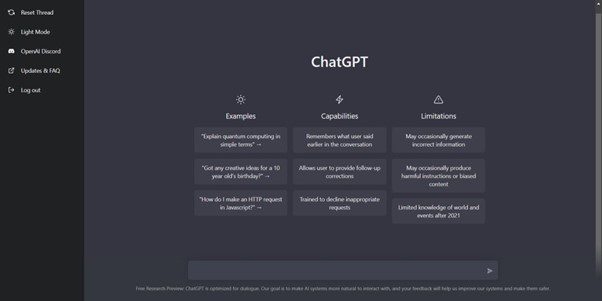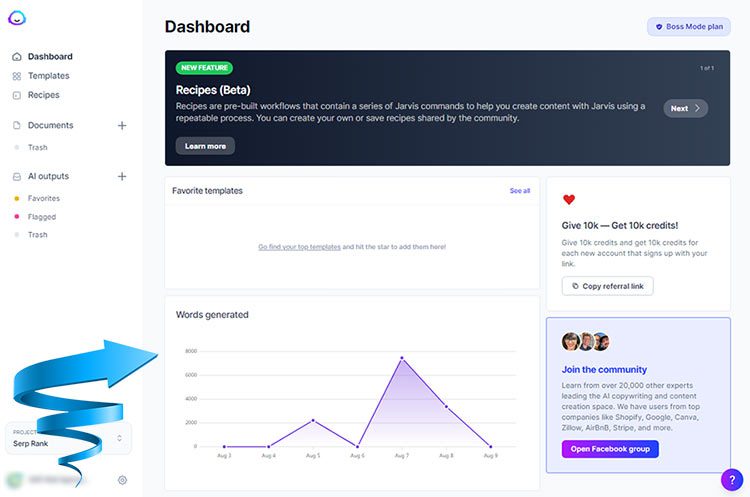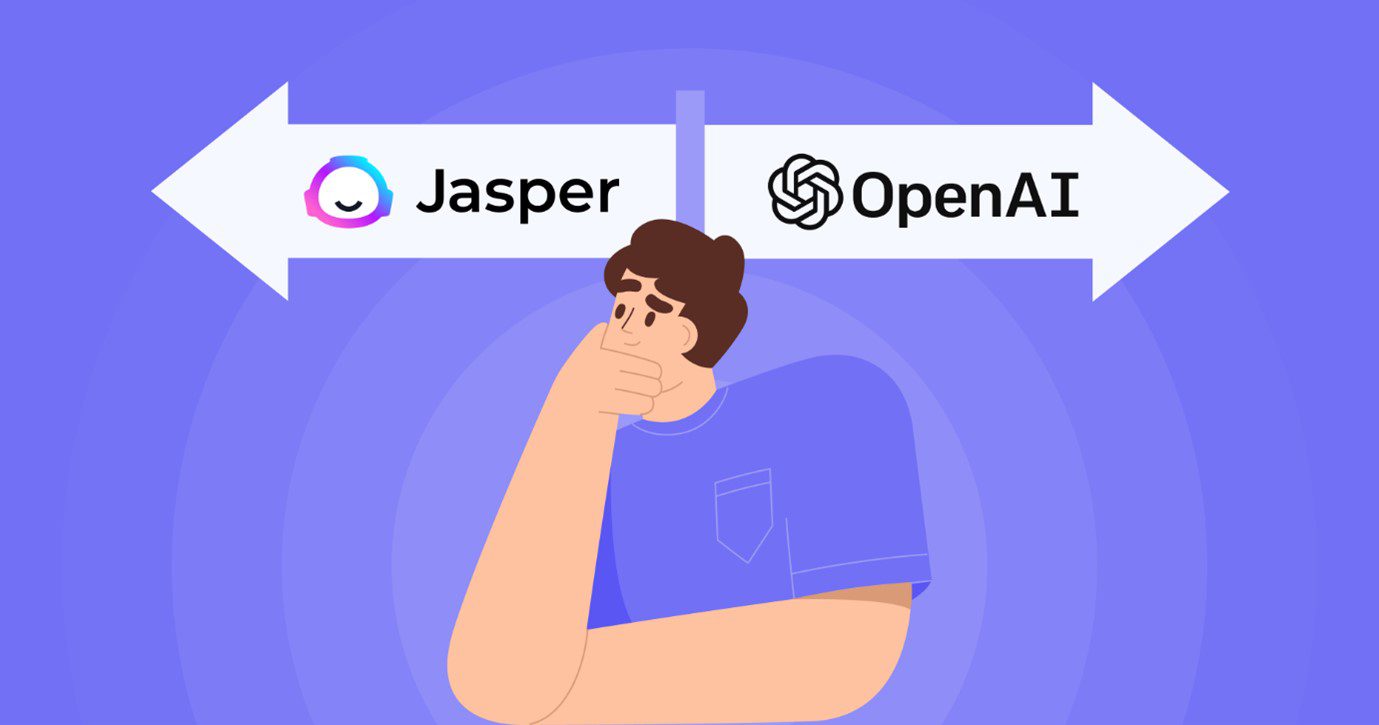Artificial intelligence (AI) has revolutionized our lives, enhancing the way we work, communicate, and engage with technology. Various industries have been impacted by AI, which has shown to be a productivity tool for increasing productivity and efficiency. Additionally, it has made it possible for us to engage in more intuitive and natural interactions with other intelligent systems. AI-powered NLP and chatbot technologies have enabled humans to converse with machines in human-like ways. This has implications for various domains requiring seamless human-machine interaction.
Two of the many impressive AI models in use are ChatGPT and Jasper. People all over the world have embraced and gained popularity for these models. Each model caters to various needs and applications with special advantages and capabilities. In this article, we will compare ChatGPT and Jasper in-depth, highlighting their key distinctions and discussing their potential moving forward. Let us begin our exploration and analysis of these intriguing AI models immediately.
Table of Contents: hide
What Is ChatGPT?
An immaculate AI language model called ChatGPT, which is developed by OpenAI, has completely changed how people interact with AI. Its creators envisioned a system to comprehend natural language inquiries and produce answers like human-written texts. ChatGPT has been trained to understand linguistic nuances and offer logical and contextually appropriate answers using deep learning algorithms and a large dataset. The ability of ChatGPT to offer thorough and correct information on various topics is one of its remarkable features.

ChatGPT Interface
When users encounter an error or need help with a specific programming problem, they can describe the issue to ChatGPT integrated within the IDE. This comprehension and response generation level exemplifies the model’s capability to help users find specific information without requiring manual research or analysis. Thanks to its in-depth understanding of coding concepts and syntax, the model can produce helpful suggestions, explanations, and even code snippets to help the user solve the problem.
Also Read: ChatGPT Vs. GPT-3 >
What Is Jasper?
Jasper.ai is a superb AI writing tool created specifically to quickly produce different types of marketing copy, such as compelling blog posts, enticing product descriptions, compelling company bios, persuasive ad copy, and attention-grabbing social media captions. With its enormous selection of editable templates, Jasper.ai removes the difficult task of starting from scratch and allows users to create captivating content easily. The extensive features provided by Jasper.ai can be very useful to marketers from all backgrounds and companies of any size.

Jasper Interface
Jasper.ai ensures that the output sounds natural, is well-written, accurately captures the desired tone, and delivers content quickly. Its integration with widely used programs like Grammarly and other Chrome extensions guarantees flawless writing and grammar. In addition, the platform offers a plagiarism checker, auto-save capabilities, document-sharing options, multi-user login support, a revision history feature, and brand voice customization options. Jasper.ai’s “Explain it To Me Like a 5th Grader” option is another standout feature that interprets complex information easily.
Is Jasper the Same as ChatGPT?
Are you curious as to how ChatGPT and Jasper differ? Let us assist you! Many frequently become perplexed when deciding between various AI models, such as ChatGPT and Jasper. Although both provide helpful support in their respective fields, the two models differ significantly. We will clarify some of these differences in this section to give a clearer understanding. Let us examine the contrasts between ChatGPT and Jasper to learn more about their unique qualities.

Is Jasper The Same As ChatGPT
🚩 Dataset for training
The nature and source of the training data used by Jasper AI and ChatGPT differ. A sizable speech dataset, including spoken language recordings, is used to train Jasper AI. This dataset comprises various textual material, including books, websites, blogs, forums, and more. However, the training data for ChatGPT consists of various written texts downloaded from the internet. ChatGPT thoroughly understands the written text and learns the nuances of human language, thanks to various sources.
🚩 Simplicity
One of the primary differences between Jasper AI and ChatGPT is their ease of use. Jasper AI is specifically designed for ease of use, with a drag-and-drop interface that makes creating and deploying AI-powered conversational applications a breeze. This approach is simple enough for businesses and individuals without extensive technical knowledge. ChatGPT, on the other hand, necessitates a higher level of technical expertise to implement effectively. Companies or individuals interested in using ChatGPT may need to consult technical experts to ensure seamless integration.
🚩 Flow of work
Jasper AI is a formidable content creation powerhouse that uses AI to support users through its extensive capabilities. ChatGPT, on the other hand, plays a different role and serves as a useful brainstorming tool for content producers. Although it enables quick blog post creation, the workflow might not be as fluid as with Jasper AI. With ChatGPT, each section of the blog post must be composed separately using AI, adding to the work required to assemble everything.
🚩 Focus of attention
While ChatGPT is a general-purpose conversational AI model suitable for various interactive applications, Jasper AI is created specifically with content creation in mind. Its primary objective is to produce marketing copy for blog posts, product descriptions, company biographies, ad copy, and social media captions. Contrary to ChatGPT, which can handle various conversational situations, Jasper AI specifically targets its language generation for marketing and business use cases. Jasper AI provides many templates and features to help marketers create engaging and pertinent content.
🚩 Interoperability
The interoperability of ChatGPT and Jasper AI is one of their main differences. Jasper helps businesses avoid over-dependence on any one source and improves the quality of its generated content by utilizing various models. While Jasper AI takes things further by incorporating other models like Neo X, T5, Bloom, and others, ChatGPT primarily uses OpenAI for its responses and relies on a generic language model. Jasper AI can identify the ideal model combination for particular use cases or industries thanks to this wide variety of models, producing better results.
Will ChatGPT Replace Jasper AI?
Are you wondering if ChatGPT will replace Jasper AI? Look no further! Although ChatGPT is a flexible conversational tool, it lacks Jasper AI’s specialized functionality and workflows optimized for content creation tasks. The primary purposes of ChatGPT are text-based response generation and text-based conversation whereas, Jasper AI focuses on content creation and its features are specifically designed for marketing copywriting. Both tools have particular advantages and applications, with ChatGPT excelling at conversational interactions and Jasper AI providing effective content creation.
Consider a marketing department that develops interesting social media captions for a forthcoming product launch. If they choose to use ChatGPT, they can enter their requests and get text-based, conversational responses. The marketing team can utilize Jasper AI’s specialized content creation features and templates, on the other hand. They can choose a specific marketing use case and gain access to innate templates designed specifically for writing marketing copy. As a result, it makes more sense to think of ChatGPT and Jasper AI as supplemental rather than interchangeable tools.
Final Thought
In conclusion, the contrast between ChatGPT and Jasper AI demonstrates each technology’s distinct advantages and potential uses for creating content using AI. Understanding that these tools can complement one another in various workflows and cater to different needs is crucial. We invite you to share this knowledge with your friends and coworkers if you find it useful. We would also like to learn about your opinions and experiences with AI tools to generate content. Let us know your valuable feedback and comments in the comment section below.



